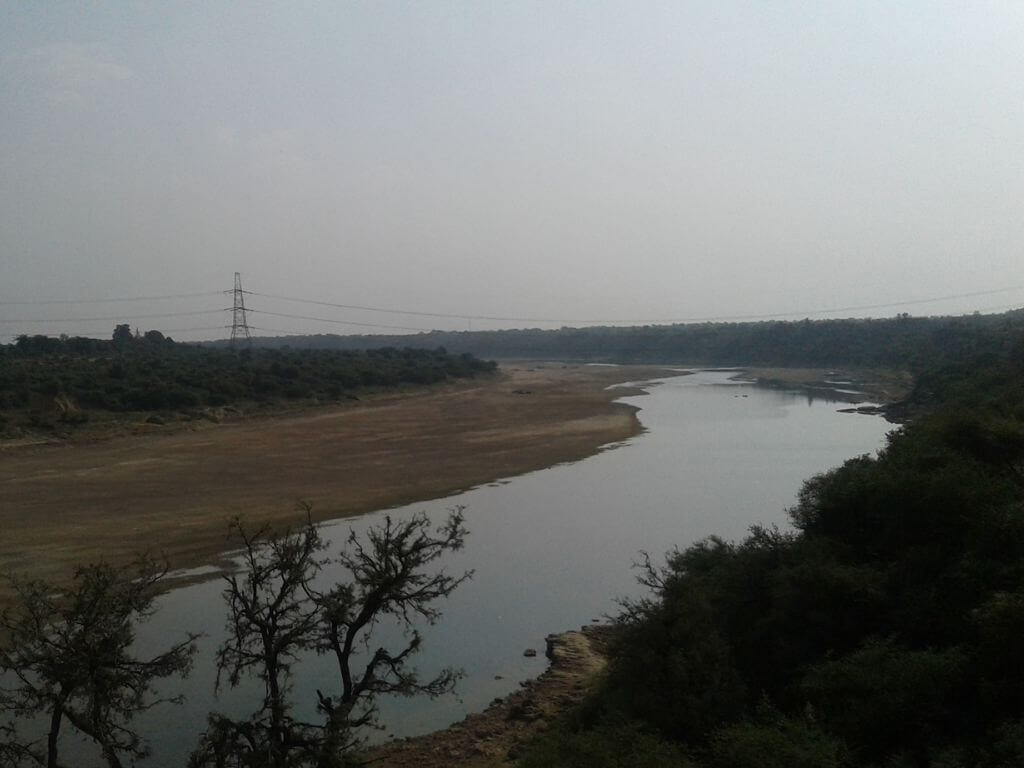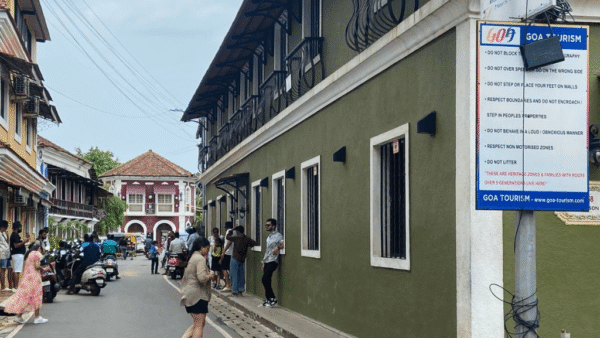Gandhinagar was among the first three planned cities in independent India. The greenest and unpolluted city for decades, the city’s original plan has changed and modified, erasing any Gandhian principles it was supposed to be founded on. Fifty years after it got the capital city tag, there are hardly any traces of sustainability and the green cover which it once boasted of is now overshadowed by rampant constructions. For all its planning, the city does not even face the Sabarmati River which is now heavily polluted.
“Gandhinagar was a copy-paste of Chandigarh but Chandigarh did not have an ‘Ahmedabad’ which factored in a lot of the development of Gandhinagar…they are becoming twin cities now and there is a thriving land market in between,” says Dr Mansee Bal Bhargava, Ahmedabad-based architect with more than 20 years’ experience, now working on – and learning – water governance and sustainability in India in a multi-disciplinary way through her engagement with communities, researchers, academicians, professionals, governments, corporates, and importantly the youth. She spoke to Team QoC about Gandhinagar as a planned city, its drawbacks, and the unsustainability of the Gandhinagar-Ahmedabad corridor.
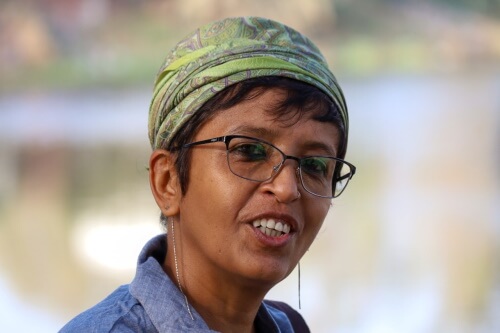
From your perspective as a planner and environmentalist, what aspects of the first master plan of Gandhinagar stand out?
Gandhinagar, like Chandigarh, came about when India was in the phase of settlement evolution. Before that Bhopal and Hyderabad and others were more organic but, in the post-independence cities, there is a conscious attempt to put society into an order. Gandhinagar, to a large extent, succeeded in the geospatial aspect but there’s a mismatch in the socio-economic part. For example, most people in Gandhinagar either have a second home in Ahmedabad, or vice versa.
When Gandhinagar was conceptualised with a lot of greenery and sparse density, it seemed the ideal city to live in. But did people really choose that? No, because we like a hustling-bustling place which Gandhinagar’s plan did not offer. This was different from Indian cities which develop in a more democratised way where people use all kinds of colours and built forms – not in an ordered manner. Simply put, Gandhinagar is a copy-paste of Chandigarh but without its urban design, but Chandigarh did not have an ‘Ahmedabad’ which influenced its development. The planners behind Gandhinagar, HK Mewada and PM Apte, were pupils of French architect Le Corbusier. I can understand what Louis Kahn may have been kept out of it.
So, you’re saying that Indianness was missing in these plans, but do you see gaps in the Gandhinagar plan?
Yes, in the larger plan but the Indianness is there to an extent in the inner grids of Gandhinagar as people live in them. The big gap apparent now is that higher density and the emerging land market in Gandhinagar were not envisaged. Outside the Gandhinagar Notified Area, the city is different and that also needs to be discussed. An important aspect in its layout was the block and grid plan with the division into 30 sectors, much like Chandigarh. If this grid plan was so well accepted by society, why did we not see planners or governments replicate it? The later Development Plans of Gandhinagar also do not build on this, they are nowhere close to the master plan. So, the planned Gandhinagar is now an old city while the rest is ‘Rambharose’ and randomly going in all directions. There is less acceptance of this grid layout; that’s a big takeaway for planners.
The interesting part about Gandhinagar is that on the main roads and blocks, you are in a formal setup, but the moment you move into neighbourhoods, you feel it’s a small town with everything going everywhere in a beautiful maze. It is difficult to find anything, the naming of the streets is quaint, and you have to just find your way. So, we have to really understand the basic idea of a city as a modular system which self-grows like a honeycomb; the grid system does not work that way, at least not the grid system we have seen.
Gandhinagar was to reflect Mahatma Gandhi’s values but was this possible with Le Corbusier’s disciples planning it? Was a marriage between Gandhian values and Modernism feasible?
The moment you bring Le Corbusier’s idea to a greenfield site, it’s just rhetoric to have Gandhian principles there. This is my firm opinion. Gandhian principles are about minimalism, sustainability, and liveability. Inside the blocks of Gandhinagar, there may be liveability, but what about the sense of community? When a new city is being designed, it should emphasise heterogeneity, but when people come from a place of same caste – maybe class – or religion, they form their own community and take ownership as it happens in our villages. When cities are deliberately planned, introducing mixed living in heterogeneous communities could have been brought in as a Gandhian principle but I don’t think it was even envisaged. Definitely, a thought process went into the making of Gandhinagar but not enough thought about how to do it the Gandhian way.
What minimalism are we talking about? And, sustainability was misunderstood as greenery which is not true. Then, take the river Sabarmati. Because the city layout itself has its back to the river, it is not attentive to the river at all. People of Gandhinagar do not associate with the river’s presence which again is unlikely for an Indian city that’s by a river. There’s Ahmedabad next to the river, then there’s Gandhinagar which is indifferent to the river. So, I don’t know which Gandhian principles were associated with the layout. In any case, Gandhi had not written much about the environment.
In socio-economic terms, the people in Gandhinagar are the elite, the ministers, and higher-order officials most of whom live in Ahmedabad and a few in ministerial bungalows within Gandhinagar. For this privileged class, the city does not matter. In the grid though, we see that common citizens occupy a large chunk. For the Class 3 and Class 4 government employees to have houses on that land would have been an expensive proposition otherwise, a luxury. If commoners getting a piece of land is Gandhian, one can say that some Gandhian principles have been applied.
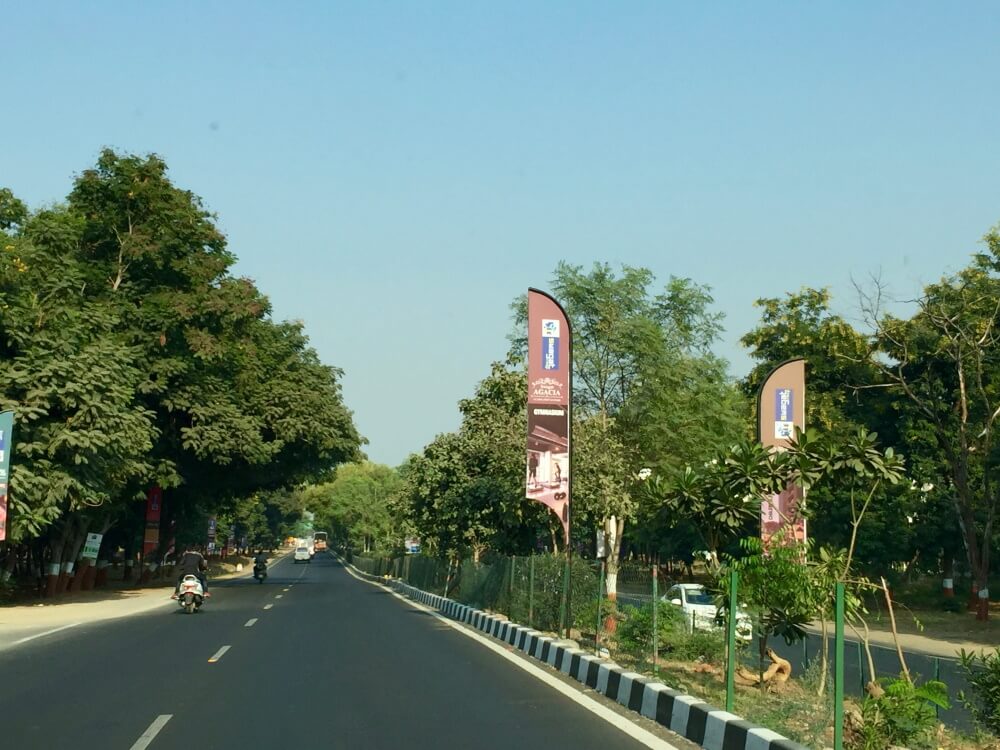
Photo: Creative Commons
Gandhinagar’s expansion seems to be a neo-liberal, private capital-driven city making. What is your impression and what does it mean to Gandhinagar?
The way density was handled in the Gandhinagar plan, there was always going to be pressure to develop around it. An entire green belt was left around it but the density beyond this belt was out of control. So, in the outer Gandhinagar, all sorts of development is happening. There’s talk about projects like GIFT City or Adani’s Shantigram but we must realise that they cannot be used as examples of a city growing because they are largely private investments; even GIFT City, in many ways, is private. This kind of city making is political intervention, it is not based on regional planning of either Ahmedabad or Gandhinagar; GIFT City is a political imposition. So, this cannot be compared with the publicly-funded cities based on Development Plans.
In Gandhinagar’s 2024 Development Plan, there are more such pockets hanging here and there, big chunks of land bought or amalgamated on which integrated townships or complexes are developed. But there is no thought about what they mean for the city’s overall development. The two highways, MH 8A and MH 8B, have been expanded. By bringing big institutions along these highways, the land value escalated many times, ancillary facilities developed too, and people came to work or live. But I know people who live in between Gandhinagar and Ahmedabad still come to Ahmedabad for their monthly groceries. It may be nostalgia but they also don’t find what they want there.
Gandhinagar and Ahmedabad, from reports, are going to be made twin cities. What are your views?
If these two cities have to merge, Ahmedabad’s stance should be that Gandhinagar is amalgamated into it rather than the other way around. Ahmedabad is a much older city with heritage and history, and is the commercial capital. Both cities have their Development Plans, but there should have been a regional plan addressing the growth of both cities – this has not happened yet. The plans of the two cities never talk to each other, that’s why there has been a land grab in between by industry and builders which helps escalate the land value. Land values are the highest between Ahmedabad and Gandhinagar.
The city’s expansion is, basically, a land valuation exercise. It’s all about builders and industry playing with land, common citizens have nothing to do with it. So, Gandhinagar still remains the administrative capital but it has not managed to become the cultural capital or economic capital, and not even human capital. What I mean by human capital is that many people do not live here; the middle class and elite may not even want to live in the old Gandhinagar because of the grid size and infrastructure which are not sufficient for them. It is old and there are stringent laws to redevelop the old areas. Therefore, we see the boom of development around the old city. It is deserted; you may not like to walk on the streets of Gandhinagar at night. I would call it a green ghost capital city.
A striking aspect about Chandigarh is that the plan did not make space for, consciously or otherwise, informal settlements which came up outside later. How does Gandhinagar fare on this?
Inside the grid, it looks like slums now especially in areas with physical deterioration and poor maintenance, but from its inception, the city has had strict regulations to really exclude informality. Also, the scale of the blocks does not allow much pedestrianisation or social life; only in some nodes people stand and sell things here and there. Slum development has not happened within the old Gandhinagar; outside it, the exorbitant land values make it unaffordable for slum dwellers. There are little villages around Gandhinagar Urban Development Authority (GUDA) but these are not slums. People living there serve the city and return to their villages. The south of Gandhinagar is this expensive land market, to the north are the Army and BSF establishments, and to the east is the river. There’s no scope for informal settlements and the informal economy. I think it was not even on the wish list of planners because Gandhinagar plan, as I said, was about putting society into an order. That was not a good idea, it divided the society.
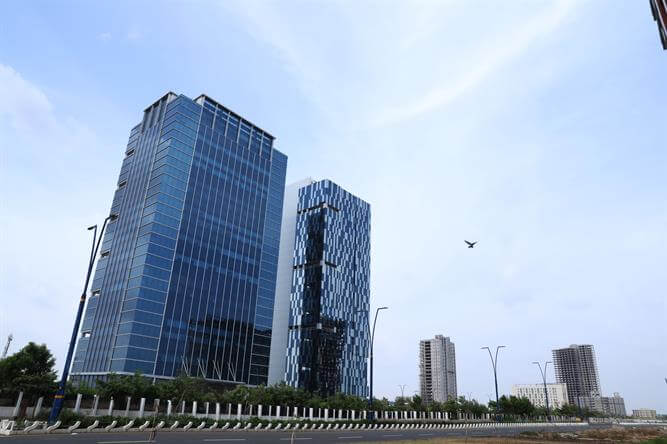
Photo: giftsez.com
So, the city plan was for middle and elite classes.
Yes, I believe that the plan was made for those with whom the planners, politicians and officers spoke to, basically the same class. So, cities, whenever they have been planned, are usually for the middle class. This is the most unfortunate part of our profession, I don’t think we have really worked out how to integrate all classes in a structure. So, we draw up a little strip or pocket of land for informal settlements now and then. There was a time when some of us were designing for HIG, MIG and LIG, but that does not happen now. The mixed use does not really happen except maybe in Mumbai but there the living conditions do not match the wealth people have.
Another curious aspect is that the master plans of cities do not seem to factor in local ecology beyond the customary nod. What is your view?
Yes, absolutely. Every planner or designer has this challenge including those like Dr. BV Doshi. Planning on a blank slate, a greenfield site with a flat topography, must have been challenging for planners to find out what was ecologically sound or not. We architects learn in our first or second year to follow site rules, understand that wind will come from here and sun will come from there. It’s a narrow perspective because we are not taught about water or ecology. All ecology is not green. Having said that, the fact that the plan did not even address that there was Sabarmati River nearby was hardly ecological. Besides, Gandhinagar’s philosophy was not well laid out and written like that of Chandigarh, which would have allowed us to resist development.
Still, in Gandhinagar there has been a conscious attempt to say keep some of the drainage courses green belt, there’s an entire green belt on the west side, and also the green buffer around the river with the biodiversity parks and other parks, and then the low-density bungalows followed by the main habitation. There was some attempt at ecological thought but I wonder if people really spoke in terms of ecology. What we see are green zones, not biodiversity zones.
How does ecology feature in the new development beyond the Gandhinagar Notified Area or in the Gandhinagar-Ahmedabad corridor?
In the development outside old Gandhinagar and in the corridor, it is a mystery how the land parcels were decided. Was it merely development or did the ecology of the place come in? Or was it just a land-value escalation strategy? GIFT City is a ghost city; it’s so expensive. Who would want to live there or have offices if it means commuting from Ahmedabad or Gandhinagar? Going there is not easy; though there are eight lane roads, it takes a lot of time. And because GIFT has been priced too high, it impacts every other piece of development around too. The same thing has happened with the riverfront; because of high prices, property could not be sold as anticipated but it is still advertised as the model of development. So, all these are land development projects, nothing more. Gandhinagar has a low-density inner core unlike say in Ahmedabad or Hyderabad or Jaipur, it has reversed the downtown.
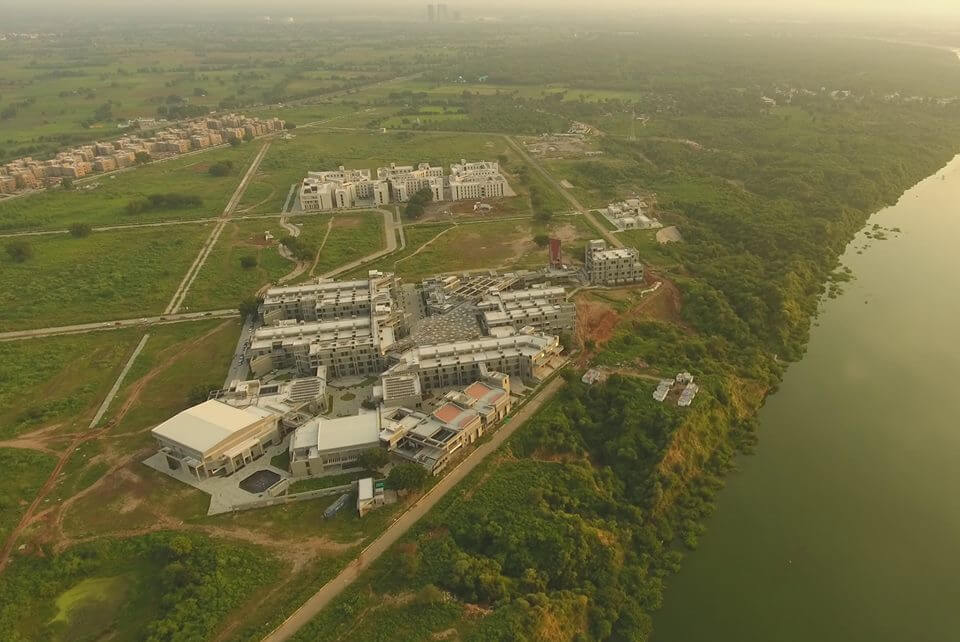
Photo: Creative Commons
A larger question that emerges from the three planned cities is whether cities can be sustainably and equitably built, and then have people just come to settle in.
City making is a challenge but this top-down planning a city for people to live in is a greater challenge. Gandhinagar is facing it. It’s also seen in Dholera, GIFT City, Shantigram, and in peri-urban Ahmedabad, all of which have among the highest vacancy rates in India but this ‘development’ is going on. This is builders’ development and land politics, not for people. In the entire corridor between Ahmedabad and Gandhinagar, you cannot find an inch of land; it’s all taken by institutions and big builders because no one else can afford it.
Where then is the space for participatory planning or people democratically collectivising to plan their neighbourhoods and cities?
This is close to my heart but how will it happen if it’s not even in the pedagogy of urban design, architecture and planning? Architects like PK Das and KT Ravindran have been talking about it but is it getting translated into our pedagogy? I don’t see it. We architects-planners and urban designers are the least mingling fraternity. Because I have jumped out of the mainstream, I can see that we work in an isolated manner. When I work with biologists, geographers, economists, and political scientists, I realise how cocooned we are in our thinking and how our pedagogy itself is top down.
This means we design cities and people live in them. Unless this thinking changes, the way we plan cities won’t change. How many architects and planners are sitting with the community they design for, even for the sake of tokenism? Because we don’t, we are going to have drawings with boxes for our cities. The Smart City pictures make me angry. Dholera’s pictures are scary – on the wetlands, you see funny-looking glass buildings like from Hong Kong and Singapore put together with flyovers and metro rails.
How do you see the future of Gandhinagar as a city?
In the old Gandhinagar and the greater Gandhinagar, the repercussions are different. For the old city, there are stringent regulations and it is not easy to get land or high prices, people will hold properties which means the vacancy rate may increase. This will impact outer Gandhinagar and its land prices. We will have more supply than demand for properties. Also, the high-end buildings are imposed whereas the need may be elsewhere.
Some people are buying second, third and fourth property for tax benefits which means there is unlikely to be major change in the social composition of the city. We may see more ghost towers and more cars, with all the glitterati but not a vibrant and thriving city life. There will be light and noise; big events especially in the Gandhinagar-Ahmedabad corridor but all politically motivated. In all this, certain ideas of making cities, as was done post-independence, will also be imposed. Urban design and planning should be different, give us better and thriving cities.
Cover photo: Sabarmati River; Creative Commons

